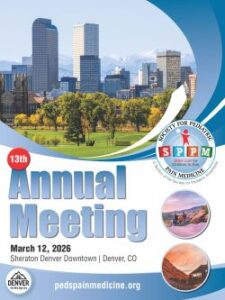 Gregory Hammer, MD
Gregory Hammer, MD
Professor of Anesthesia & Pediatrics
Stanford University School of Medicine
Dr. Genevieve D’Souza, an active member of the communications committee of SPPM, recently interviewed Dr. Gregory Hammer about this new development in pain management.
Dr. Greg Hammer is a Professor of Pediatrics and Anesthesiology, Perioperative and Pain Medicine in the Stanford University School of Medicine. Dr. Hammer’s clinical focus is in pediatric anesthesia and critical care medicine. His research is in developmental pharmacology. He has an active laboratory has published more than 100 peer-reviewed articles on topics related to the pharmacology of opioids, sedative agents and vasoactive drugs as well as organ transplantation.
Work over the past two decades has demonstrated that many of the common side effects of opioids, including GI and respiratory dysfunction, appear to be secondary to β-arrestin-dependent signaling, whereas the analgesic effect of these agents appears to be mediated by G protein-dependent signaling.
Oliceridine is a next generation IV opioid, as a G protein-selective agonist at the μ-opioid receptor. The G protein selectivity of this compound results in potent analgesia with substantially reduced recruitment of β-arrestin, a signaling pathway associated with adverse events such as opioid induced respiratory depression.
Advantages of Olicerdine Over Traditional IV Opioids
The advantages of oliceridine over non-biased, conventional opioids relate to its selective activity at the opioid receptor to activate the G-protein pathways vs. the β-arrestin pathway. Since the drug is only available as an IV preparation it can be used only in hospitalized patients. It is not clear how the drug presents an advantage re: abuse potential in the event that it is synthesized illicitly as fentanyl has been, though the decrease in respiratory depression might be advantageous.
Key Findings During the Adult Clinical Studies
Apollo-1: Phase 3 RCT s/p bunionectomy – fewer respiratory, GI side-effects vs. morphine.
Apollo-2: Phase 3 RCT s/p abdominoplasty – fewer respiratory, GI side-effects vs. morphine.
ATHENA: Phase 3 open label – IV oliceridine postop w/o comparator – generally safe and well-tolerated.
Advantages and Challenges to Starting a Pediatric Study in an Academic Institution
Pediatric trial protocols are in current development according to PREA requirements. The drug will undoubtedly be used in children and adolescents, and these trials are essential. Information re: dosing in infants and children must be forthcoming. Of course, analgesia trials are notoriously difficult in children for a number of reasons. Use of placebo arms may not be appropriate, especially in pre-verbal children. Families are understandably reluctant to enroll their children in analgesia trials. Studies to determine proper dosing in infants and young children may provoke serious adverse events, primarily respiratory-related, due to pharmacokinetic and pharmacodynamic differences in this vulnerable population. The risks in slow metabolizers with depressed oxidative (cytochrome) activity must be clarified. On the other hand, oliceridine has been shown to exhibit a greater therapeutic index in high-risk adult populations, including the elderly and obese. Advanced age and obesity were not associated with an increased risk of opioid-induced respiratory depression in a recent analysis presented at the ASA in 2019.[1]
[1] Brzezinski M, Hammer GB, Bergese SD, et al. Low incidence of opioid-induced respiratory depression observed with oliceridine regardless of age or body mass index. 2019A Annual Meeting of the American Society of Anesthesiologists.
 SPPM 13th Annual Meeting
SPPM 13th Annual Meeting